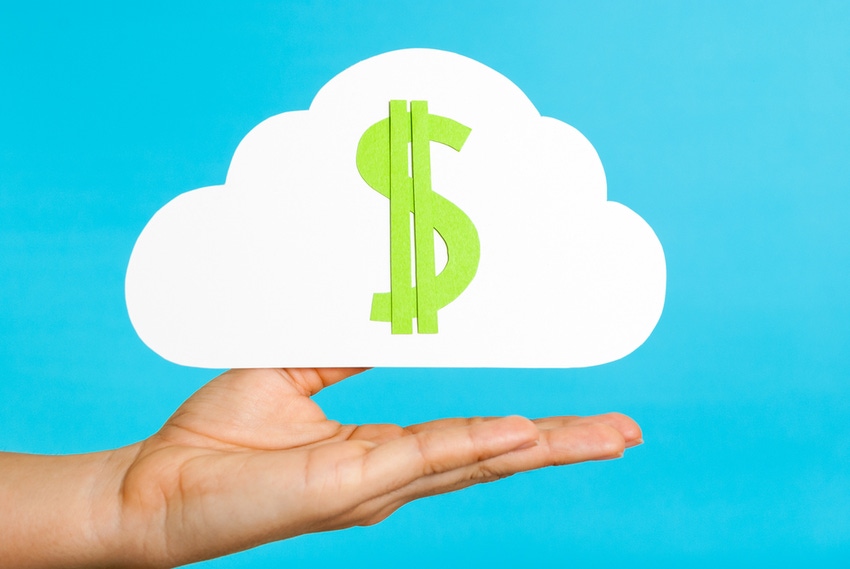We analyze the trends underscoring earnings from Amazon Web Services, Microsoft Azure and Google Cloud.

Cloud computing’s once-meteoric rise appears to be leveling out, tempered by more watchful end-user spending as a looming recession encourages more measured IT investment. It looks like the free-for-all days of cloud adoption and spending – particularly unfettered during the COVID-19 pandemic – have ended.
That’s a not a bad thing, frankly. In many cases, it means more organizations are at last paying attention to how much they’re spending on cloud. A successful company controls its expenses. And when cloud computing eats an ever-greater portion of the IT budget, executives need to assess and adjust the outlay.
Of course, cloud computing providers and their investors might see the situation in a different light. After all, who wouldn’t welcome a seemingly infinite parade of record growth? But even Wall Street’s hopes can’t impinge on the laws of physics – or financial physics, if you will – that what goes up must come down.
That’s not to imply that cloud computing adoption is dropping in any dramatic fashion. It’s not. It’s simply to say that everything reaches a ceiling. And after two years of pandemic-driven frenzy, adoption is becoming more even. That’s happening within each of the hyperscalers. They serve as leading indicators of what lies on the horizon for the cloud computing sector.
AWS, Azure, Google Cloud Are All Still Growing
Each of the Big 3 – Amazon Web Services, Microsoft Azure and Google Cloud – continues to report growth. Let’s be clear about that. Even though the numbers may not meet company or analyst projections, the hyperscalers are still adding customers. Furthermore, those users are consuming more services. It’s just that the rates at which they’re doing so are no longer blistering-hot.
To that point, AWS revenue hit $20.5 billion for the third quarter of 2022. That marked a 27% increase. But yes, it was still less than AWS or analysts expected. Brian Olsavsky, CFO of Amazon, parent company of AWS, attributed the numbers to just what we noted above.

Amazon’s Brian Olsavsky
“With the ongoing macroeconomic uncertainties, we’ve seen an uptick in AWS customers focused on controlling costs,” Olsavsky told analysts on Oct. 27 when Amazon reported its earnings. And we’re proactively working to help customers cost optimize, just as we’ve done throughout AWS’ history, especially in periods of economic uncertainty.”
Because AWS remains the largest public cloud computing provider in the world, it serves as the lead predictor for the sector overall. To that point, AWS’ owner, Amazon, has implemented a hiring freeze that has trickled into the cloud division, and is keeping a careful eye on its own spending. In essence, Amazon appears to be bracing itself for a recession.
There’s a similar feel over at Microsoft, which recently cut almost 1,000 jobs throughout the company.
The trouble with discussing Microsoft’s cloud unit, Azure, though, is that Microsoft does not break out that division’s earnings. It only provides revenue percentages. In the two years Microsoft has published that data, this latest quarter (its fiscal first quarter, rather than rivals’ 2022 third quarter) showed Azure’s slowest growth rate yet. To that point, revenue went up 35%, but that was down compared to the previous report’s 40%, and compared to 50% growth a year ago.
Of the Big 3, Google Cloud may have experienced the most surprising quarter. The 14-year-old division of Alphabet has yet to report a profit. However, its third-quarter revenue soared 38%, to $6.9 billion. Analysts were forecasting $6.7 billion. Google Cloud also narrowed its losses, perhaps pointing to a slow crawl toward profitability.
The bigger item to note here is that Google Cloud’s revenue outpaced Azure’s. Given that Azure ranks about four times larger than Google Cloud, this is significant. Google Cloud, under CEO Thomas Kurian, continues to focus on acting as “the data cloud” and those efforts appear to be paying off. The company has lifted its recent hiring freeze.
Challenges Abound
Nonetheless, the cloud computing industry is coming up against some challenges. Higher energy costs are hurting providers’ financials (which means those costs will pass to channel partners and their customers). Microsoft, for example, expects to pay …
… $800 million more than it had planned. It’s clear that the other macroeconomic pressures impacting nearly every organization – from supply chain shortages and foreign currency fluctuations to availability of skilled staff and geopolitical problems – are also bruising the cloud computing providers.
How this will all play out against the backdrop of a global recession remains unknown. We predict that end-user organizations will continue to apply more mindfulness to their cloud spending — an overdue necessity. For years, people bought the assertion that cloud computing, and the associated shift from the capex budget to opex would result in less spending compared to running on-premises infrastructure. That’s not the case. Cloud computing is expensive. Subscriptions do not come cheap and they have created mounting – often surprising – bills for organizations. Of course, so did pandemic-led cloud deployments. Between 2020 and late 2021, in efforts to support remote workers amid COVID-19, organizations consumed cloud services and infrastructure at unprecedented rates.
Now, as end users clean up the excess and rein in spending, the Big 3 are reeling a bit from the pullback. The earnings disappointing investors this past week represent a natural result of years of overspending. Moreover, they serve as a response to macroeconomic pressures.
Cloud Computing Growth Will Continue — Just Not at Recent Rates
Yet underneath the hype and hysteria lies the reality: Cloud computing adoption will only continue. It may not do so at the rates the greedy beast that is Wall Street requires, but growth itself remains in little question. Synergy Research Group, for one, predicts “strong growth over the next five years.”

Synergy Research Group’s John Dinsdale
“U.S. spending on cloud services is now approaching a $100 billion annual run rate and continues to grow by 30% per year, which is pretty unusual for such a large IT market,” said John Dinsdale, a chief analyst at Synergy. “The growth rates for regional cloud markets beyond the U.S. will bounce back as some of the current exceptional circumstances work their way through the system. This helps to underpin Synergy’s cloud forecasts.”
In the more near-term, Gartner is forecasting almost 20% higher spending on cloud computing in 2023 than in 2022. New numbers from the research firm indicate outlay on public cloud will hit $592 billion in 2023, up from $490 billion this year. That’s an increase of nearly 19%.
“Current inflationary pressures and macroeconomic conditions are having a push-and-pull effect on cloud spending,” said Sid Nag, vice president analyst at Gartner. “Cloud computing will continue to be a bastion of safety and innovation, supporting growth during uncertain times due to its agile, elastic and scalable nature.”
However, Nag cautioned (and reflecting our point), organizations “can only spend what they have. Cloud spending could decrease if overall IT budgets shrink, given that cloud continues to be the largest chunk of IT spend and proportionate budget growth.”
Want to contact the author directly about this story? Have ideas for a follow-up article? Email Kelly Teal or connect with her on LinkedIn. |
Read more about:
Channel ResearchAbout the Author(s)
You May Also Like


